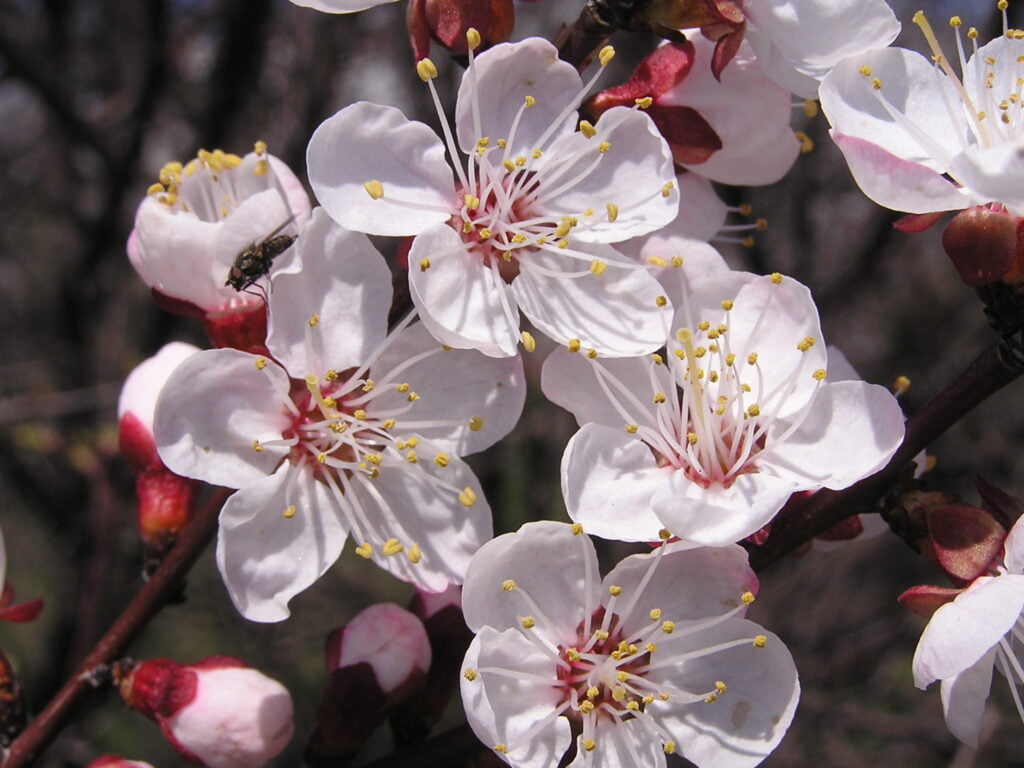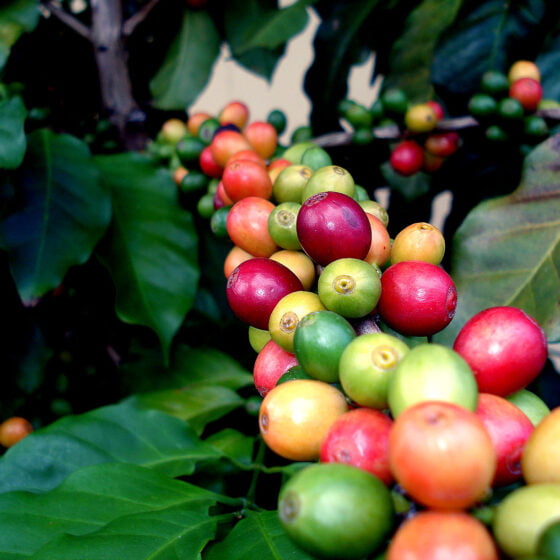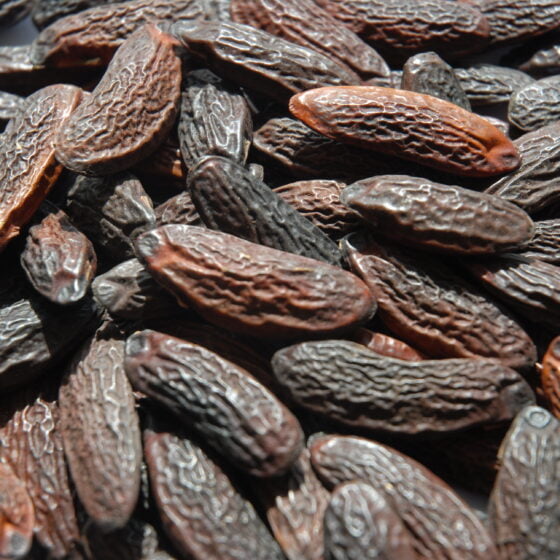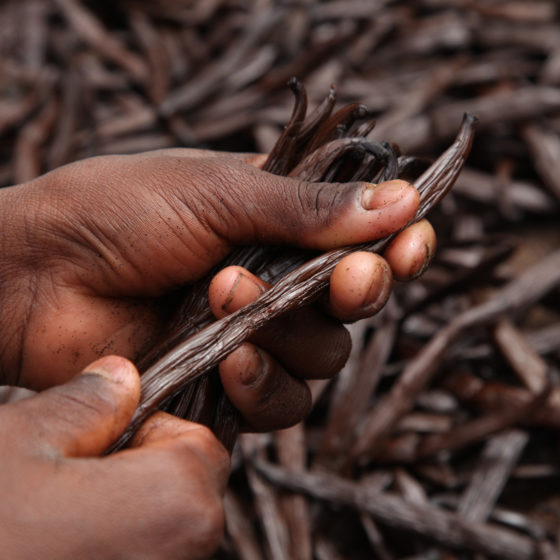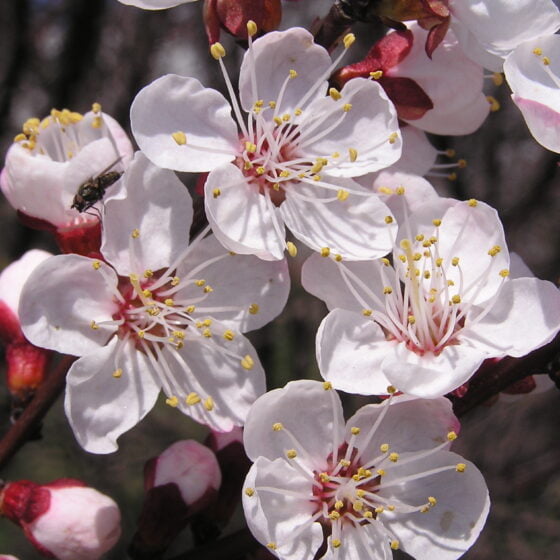
Bitter almond FPA Morocco
Prunus armeniaca
General data
Harvest Calendar
- J
- F
- M
- A
- M
- J
- J
- A
- S
- O
- N
- D
Product details Fragrance side
Although bitter almond essential oil is often replaced by benzaldehyde, it is still used today, especially in natural formulations, particularly in almond or cherry accords.
About
The apricot tree is native to China and has been cultivated there for over 2,000 years. During the 1st century BC, the practice of cultivating this tree spread to the Middle East, particularly Iran and Armenia, but did not arrive in France until the 15th and 16th centuries. It has long been held that Prunus armeniaca originated in Armenia, hence its botanical name. It is sometimes even called Armenian plum.
The bitter almond comes from the fruit of Prunus armeniaca or the apricot tree. It is a small tree that grows to eight to 12 meters in height and bears white to pinkish blooms. The fruit is a drupe that resembles a small peach, yellow to orange in color, often tinged with red on the side enjoying the greatest sun exposure. The kernel, or almond, is hidden in a hard shell at the fruit’s center.
Obtaining the essential oil entails pressing and grinding or crushing the almonds. This produces a vegetable oil and solid residues called defatted meal. During the grinding process, the amygdalin contained in the almond is transformed into hydrocyanic acid and benzaldehyde, responsible for the almond-like odor.
The essential oil, separated from the hydrocyanic acid, is obtained by distilling the solid residues that remain after the grinding process.
Fragrance side
Although bitter almond essential oil is often replaced by benzaldehyde, it is still used today, especially in natural formulations, particularly in almond or cherry accords.
About
The apricot tree is native to China and has been cultivated there for over 2,000 years. During the 1st century BC, the practice of cultivating this tree spread to the Middle East, particularly Iran and Armenia, but did not arrive in France until the 15th and 16th centuries. It has long been held that Prunus armeniaca originated in Armenia, hence its botanical name. It is sometimes even called Armenian plum.
The bitter almond comes from the fruit of Prunus armeniaca or the apricot tree. It is a small tree that grows to eight to 12 meters in height and bears white to pinkish blooms. The fruit is a drupe that resembles a small peach, yellow to orange in color, often tinged with red on the side enjoying the greatest sun exposure. The kernel, or almond, is hidden in a hard shell at the fruit’s center.
Obtaining the essential oil entails pressing and grinding or crushing the almonds. This produces a vegetable oil and solid residues called defatted meal. During the grinding process, the amygdalin contained in the almond is transformed into hydrocyanic acid and benzaldehyde, responsible for the almond-like odor.
The essential oil, separated from the hydrocyanic acid, is obtained by distilling the solid residues that remain after the grinding process.
Other type of extracts
(Gourmand)
